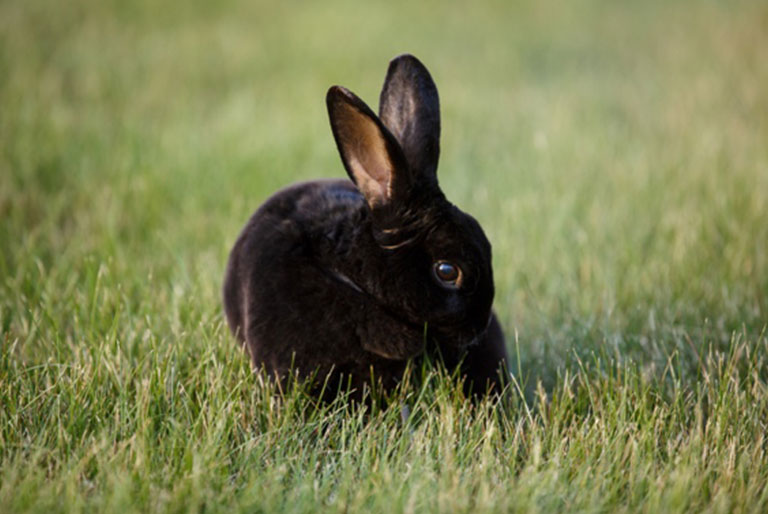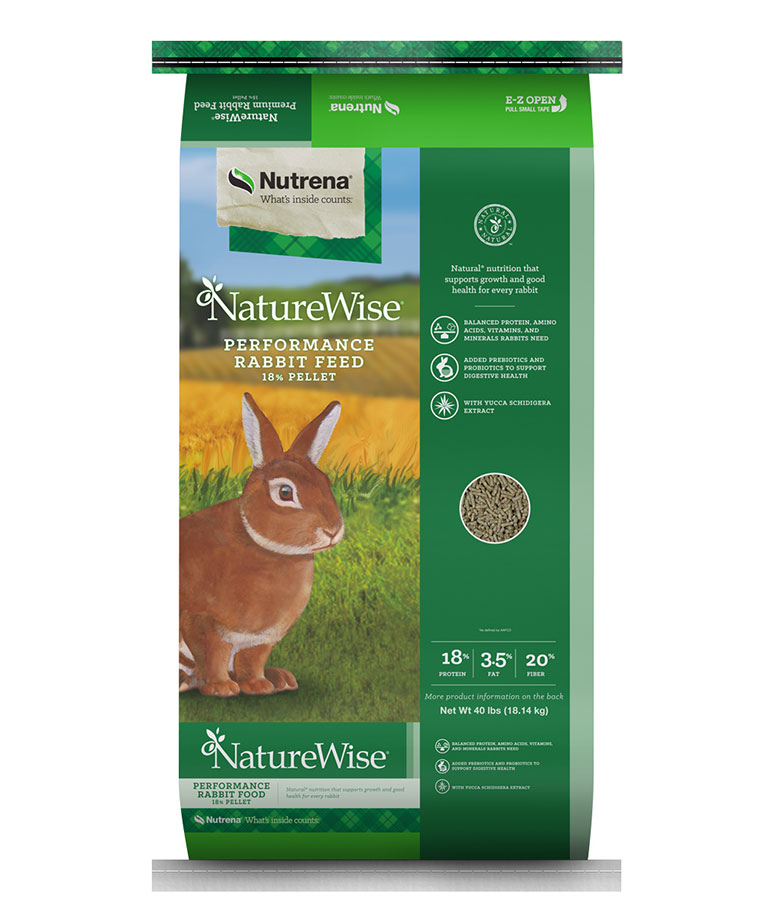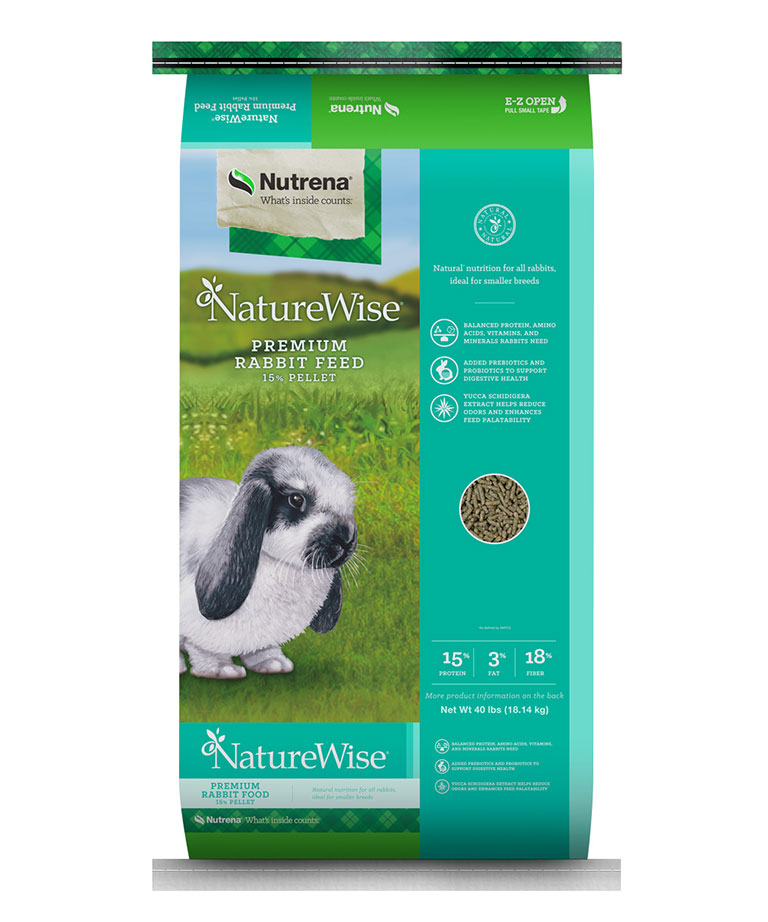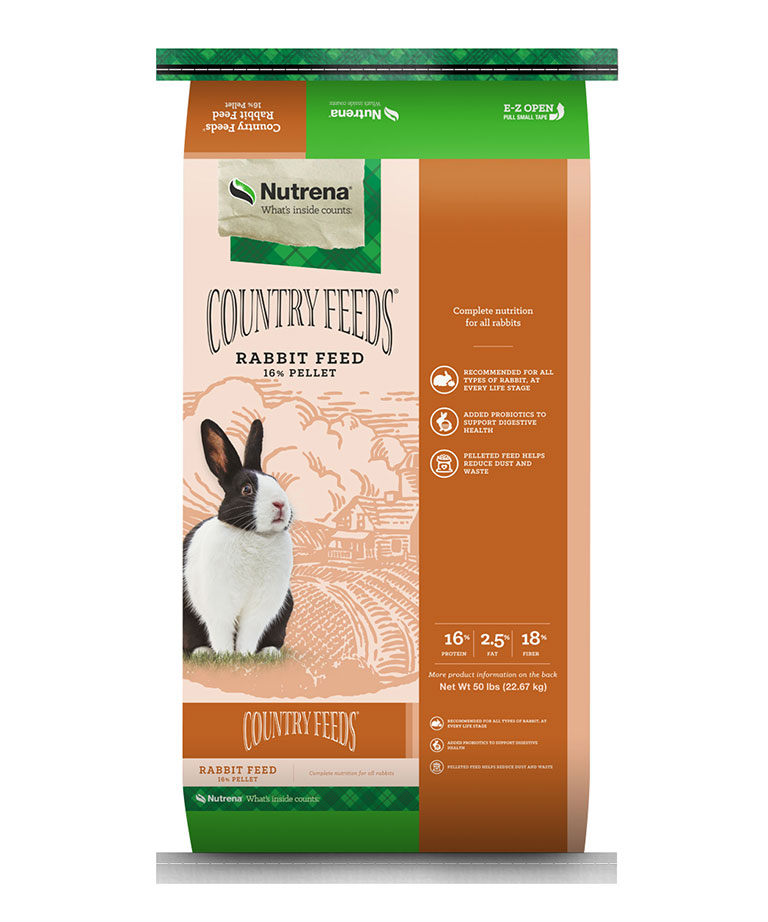
Rabbits
Your go-to resource for all things related to raising and caring for rabbits. Our Rabbit Blog offers expert insights, tips, and advice on topics such as rabbit nutrition, health, housing, and breeding.
Rabbit Blog
-

Selecting the Right Pet Rabbit for You
Few animals make a more delightful pet than a bunny. Domestic rabbits are clean, cuddly, inexpensive, and intelligent. Choose the right bunny and care for it well, and it will become a good friend and companion.
View Blog -

Feeding Rabbits
One of the joys of keeping pet rabbits is bringing them a delicious treat and watching their enthusiastic dining. These adorable animals are strict vegetarians that can live solely on a diet of quality hay. Most rabbit owners prefer feeding commercially manufactured pellets, which are formulated to meet all the animal’s nutritional needs.
View Blog -

Water for Rabbits
A cuddly bunny makes one of the most endearing of pets. They are quiet, clean, easy and inexpensive to keep, and utterly delightful to talk to and pet after a stressful day at work. In most towns anyone keeping a dog needs to license it. Not so with rabbits, and even their droppings are easy to handle and make outstanding fertilizer.
View Blog
Explore Rabbit Products
-
 NatureWise
NatureWise
18% Performance Rabbit Feed
18.0% Crude Protein20.0% Max Crude Fiber3.5% Crude FatNatural nutrition for all rabbits, supports growth and good healthLearn more -
 NatureWise
NatureWise
15% Premium Rabbit Feed
15.0% Crude Protein18.0% Max Crude Fiber3.0% Crude FatNatural nutrition, ideal for smaller breeds of rabbitsLearn more -
 Country Feeds
Country Feeds
16% Rabbit Feed
16.0% Crude Protein18.0% Max Crude Fiber2.5% Crude FatProvides the proper balance of nutrients to help enhance growth, feed efficiency and good health for all rabbitsLearn more
Frequently Asked Questions
Find answers to your most common questions and concerns about Nutrena products, animal nutrition, feeding guidelines, and more in our comprehensive Frequently Asked Questions (FAQ) section.
View All-
How can I tell how fresh my feed is?
Nutrena feed bags are marked on the tag with a code that indicates what day that bag of feed was produced on.
On the tag, look for “Lot:” followed by a series of numbers and/or letters. The first two digits (may be letters or numbers) indicate which plant made that product, and then there are 4 digits strung together – the first digit indicates the year, so anything made in 2019 would have a 9, anything after the 1st of 2020 has a 0. Then the next three numbers are called the “Julian Date Code” – these number the days of the year. So, Jan 1 is 001, Jan 2 is 002, and so on until December 31 is 365.
Example: WB0032 or 590032. These Lot codes would indicate product made in 2020, on the 32nd day of the year, or February 1st.
The first day of each month corresponds with the following Julian Date code:
001 = Jan 1st
032 = Feb 1st
060 = March 1st
091 = April 1st
121 = May 1st
152 = June 1st
182 = July 1st
213 = Aug 1st
244 = Sept 1st
274 = Oct 1st
305 = Nov 1st
335 = Dec 1st -
What is the typical shelf life for feed?
The shelf life of feeds can vary greatly, based on the type of feed and the conditions it is stored in.
Textured (or “sweet”) feeds typically have the shortest shelf life, as the higher moisture content makes them more prone to mold issues. Pelleted feeds have a longer shelf life, and extruded feeds have the longest shelf life.
The biggest factor, though, is storage conditions. When stored in dry, cool conditions, from the date of manufacture through storage at a dealership and at farm, all the way to feeding, nutrient levels in animal feeds can be good for up to 6 months, although palatability may fall off some during that time.
However, changes in heat or humidity can take shelf life down to just a few weeks. It is generally recommended to keep purchases of feed smaller and more frequent to help ensure optimal freshness:
Use pelleted feeds within 60 days during summer months and 90 days during winter months.
Use textured feeds within 45 days during summer months and 60 days during winter months.
It is also important to always inspect feed prior to use for bugs, mold, or other evidence of damage. -
What should I do if my feed is moldy?
Never offer moldy hay or feed to animals. Store feed properly to prevent exposure to moisture or contamination by insects or other pests.
If you suspect your feed is spoiled when you purchase it, you can return it to your retailer within 30 days of purchase for a full refund.
-
Does Nutrena offer any organic products?
The Nature Smart line of poultry products is USDA Certified Organic. At this time, those are our only organic products.
-
Does Nutrena offer coupons or samples of products?
We do periodically provide special offers to consumers via e-mail. To join our list, sign up here. Offers may include national promotion offers, or regional offers on behalf of local retailers. We will not share your names with anyone else.
Samples are not available, however you can work with your local retailer to try a bag of the product you are interested in.
-
Does your feed contain Genetically Modified Grains?
Yes. Some of our products may contain genetically modified ingredients. It’s important to remember that all grain is technically genetically-modified, as simple plant breeding is a form of genetic modification.
Agricultural biotechnology (including genetically engineering grain in a laboratory to enhance desired traits) is thoroughly researched, regulated, and safe to feed your animal. GMO ingredients are prevalent in the feed supply chain. Because grain for feed is purchased in bulk from large storage facilities, it is not possible to tell which corn has been genetically engineered. It is possible to specifically purchase “non-GMO” grains, but this comes at a premium price. Producing feed with non-GMO grains would be cost prohibitive.
The US Department of Agriculture has facts about Agriculture Biotechnology on their website.
-
Do your feeds contain any ingredients from other countries?
Cargill, the maker of Nutrena brand products, manufactures its U.S. products entirely within the United States but those products do, in some instances, contain ingredients imported from outside the United States. In those instances, we work closely with our suppliers on controls for promoting high levels of quality and safety in the sourcing of ingredients.
At Cargill, food safety is a top priority. As there continue to be news reports related to contaminated ingredients we want to assure you that we are evaluating and assessing each new concern. Our approach to these concerns has been to recognize that issues related to intentional and unintentional product contamination are not exclusively unique to any single country or any single product type. We emphasize the use of a rigorous qualification process for all of our suppliers in all countries where we source raw materials to ensure the proper controls and quality and food safety procedures are in place for any of the materials that come in contact with our product. We assure you that Cargill meets all regulatory requirements for its production of animal feed in the United States. Accordingly, we do not expect any of the raw materials that we use in our animal feed products to be of concern.
-
I am concerned about your feed bags and the fact that they are made out of plastic. Why are they plastic, and what can I do with them?
Poly bags are more durable and water resistant than paper bags, which reduces damage to feed and wasted product through broken bags. Poly bags also keep feed fresh for longer periods of time.
Numerous animal owners have found creative uses for the bags after the feed is gone, including creating tarps, ATV seat covers, re-usable tote bags, and various other storage containers. Re-using the bags can be a very effective method of recycling!
The plastic used in Nutrena feed bags is polypropylene (PP), which is a class 5 resin. Polypropylene bags are very occasionally accepted at recycling facilities. However, since we are unable to guarantee their acceptance, we do not print the symbol on the packaging, so as not to mislead anyone.
